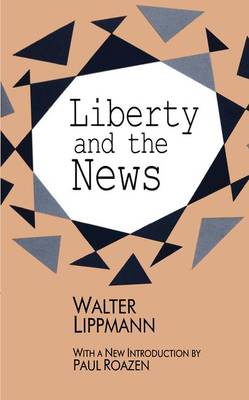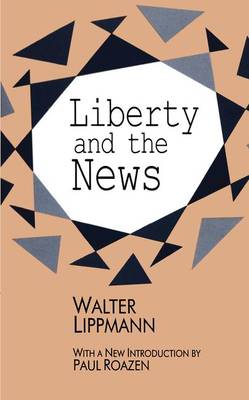
- Retrait gratuit dans votre magasin Club
- 7.000.000 titres dans notre catalogue
- Payer en toute sécurité
- Toujours un magasin près de chez vous
- Retrait gratuit dans votre magasin Club
- 7.000.0000 titres dans notre catalogue
- Payer en toute sécurité
- Toujours un magasin près de chez vous
Description
This little gem of a book, which first appeared in 1920, was written in Walter Lippmann's thirtieth year. He was still full of the passionate faith in democracy that was evident in his writings before the First World War. From today's point of view, Lippmann's argument seems unusually prescient. He was troubled by distortions in newspaper journalism, but was also deeply aware of the need to protect a free press. Lippmann believed that toleration of alternative beliefs was essential to maintaining the vitality of democracy. Liberty and the News is a key transitional work in the corpus of Lippmann's writings. For it is here that he proposes that public opinion is largely a response not to truths but rather to a "pseudo-environment" which exists between people and the external world. Lippmann was worried that if the beliefs that get exchanged between people are hollow, and bear only a purely accidental relationship to the world as it truly is, then the entire case for democracy is in danger of having been built on sand. His concerns remain very much alive and important.
Spécifications
Parties prenantes
- Auteur(s) :
- Editeur:
Contenu
- Nombre de pages :
- 100
- Langue:
- Anglais
Caractéristiques
- EAN:
- 9781560008095
- Date de parution :
- 30-01-95
- Format:
- Livre broché
- Format numérique:
- Trade paperback (VS)
- Dimensions :
- 127 mm x 203 mm
- Poids :
- 189 g

Les avis
Nous publions uniquement les avis qui respectent les conditions requises. Consultez nos conditions pour les avis.






